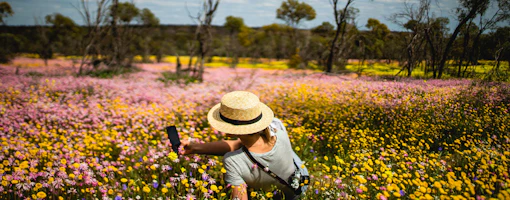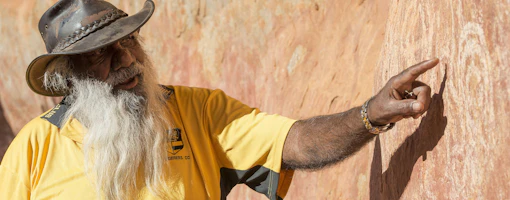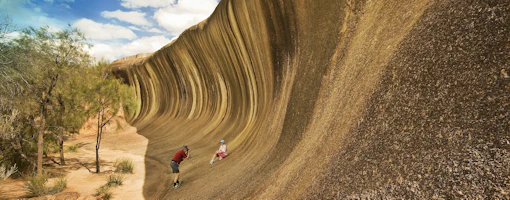
Fitzgerald River National Park
Explore a UNESCO biosphere reserve of incomparable coastal beauty
Words by Carolyn Beasley
Entering the Fitzgerald River National Park from the coastal village of Hopetoun, the quartzite peak of East Mount Barren looms large. In the distance, there’s Mid Mount Barren, and further again is West Mount Barren. But the landscape here is anything but barren, in fact it’s teeming with vibrant life. Vast swathes of coastal heath give way to wetlands, eucalypt forest, unspoiled beaches, and a surprising lack of humans.
Biodiversity Hotspot
The Fitzgerald River National Park, or ‘The Fitz’ to locals, is one of Australia’s largest national parks, at around 300,000 hectares. It’s one of the most biodiverse places on the planet, with over 1800 species of flowering plants, including 75 species that are found nowhere else.
Especially in spring, the park is a dazzling natural garden. Notable plant species include the Royal Hakea, reminiscent of a tall, colourful cabbage standing like sentinels over the heathland, and the Qualup Bell, with showy, pink and cream blooms. As for Eucalypts, there’s nowhere with a greater species count than right here.
Some 209 species of birds are flitting around the park, including the rare Western Bristlebird, Western Ground Parrot and Carnaby’s Black Cockatoo, along with adorable marsupials such as the Honey Possum and the endangered Dibbler.
The staggering biodiversity here is attributed to varied geology, along with nutrient poor soils, which has forced plants to diversify, using every ecological niche and method of survival.
Thanks to its many rare and restricted species, the park appears on the Australian National Heritage List, and is even designated a UNESCO Biosphere Reserve.
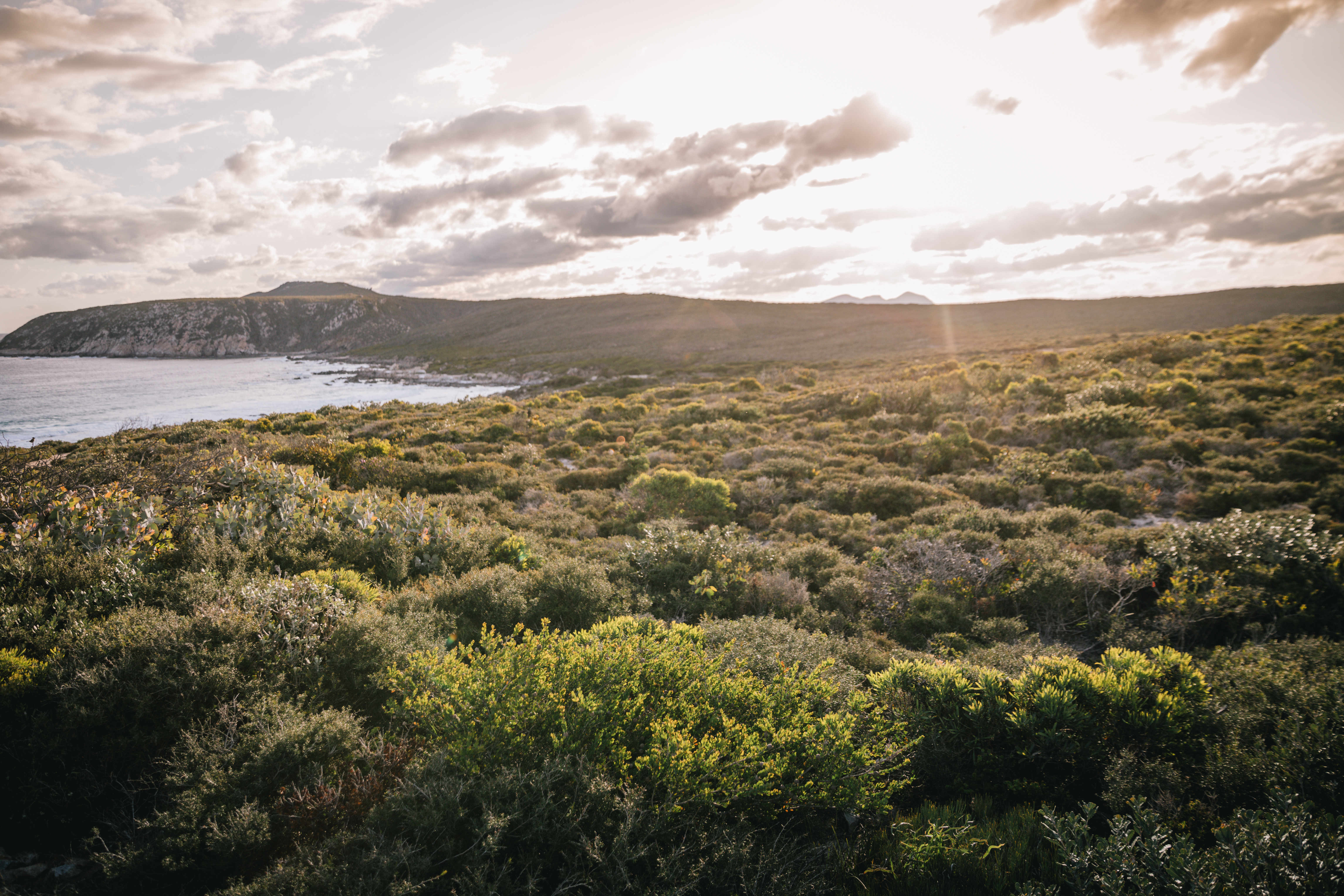
Access
The park’s only sealed, all weather road is Hamersley Drive, providing entry from the eastern side, near Hopetoun. Access the western side of the park near Bremer Bay on Devils Creek Road or the unsealed Pabellup Drive. Several four-wheel-drive tracks enter the park from the north.
A large central section of the park is not accessible at all, and this helps preserve the wilderness and prevent the incursion of ‘dieback’, a fungal disease that kills vegetation. Dieback is spread by vehicles and footwear. It’s recommended to hose mud off your vehicle and shoes before arriving, and utilise the boot scrubbers where provided.
Hikes and strolls
Explore the park on its many trails for all abilities. Universal access is provided to:
- A lookout beside Barrens Beach. A sculpture here artistically interprets the coastline.
- Cave Point. From the dramatic cliff-top lookout, check out the mighty sea cave below. Looking back towards East Mount Barren, notice the ‘wave bench’, where waves chiselled away the rocky mountain when sea levels were higher.
- Point Ann, with its whale watching platforms.
For the moderately fit, take the uphill slog at East Mount Barren. The 2.6 km return trail can be rough and steep in parts. Follow trail markers through the diverse hakeas, banksias, and wind-pruned eucalypts for a bird-eye view of Hamersley Inlet, Culham Inlet and Hopetoun.
For something longer, the Hakea Trail traces 23km (one-way) through superb coastal scenery from Cave Point to Quoin Head. Camp along the way at Hamersley Inlet Campground or Whalebone Creek Campground (four-wheel-drive access only). In the western section of the park, the Mamang Trail is 15.5km one-way, and takes in Point Ann, Point Charles, and finishes at the Fitzgerald River Campsite.
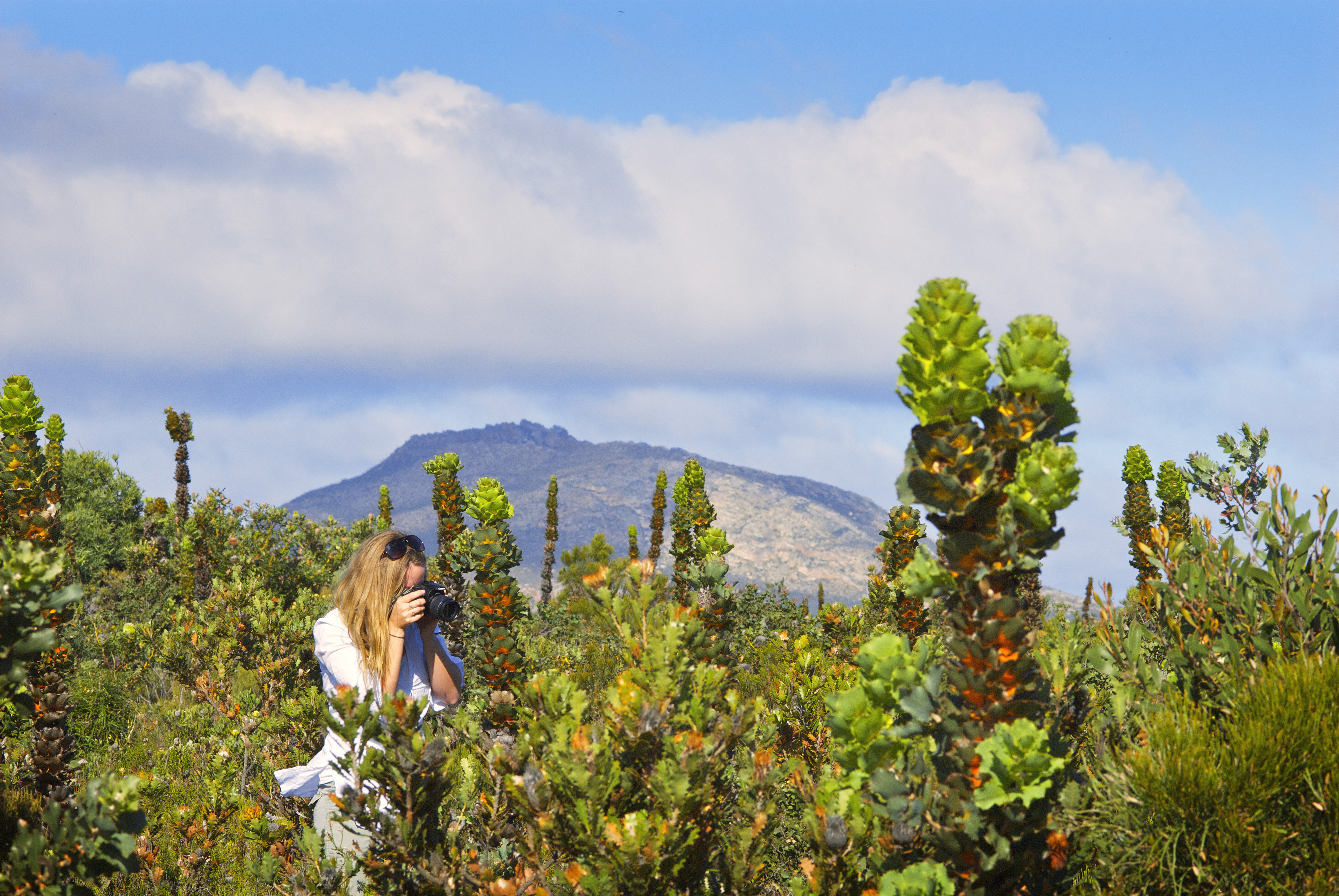
Where to stay
The Department of Conservation, Biodiversity and Attractions provides campsites with facilities at Four Mile and St Mary Campgrounds. The Hamersley Inlet Campground (in the Shire of Ravensthorpe reserve) is suitable for caravans, and has boat launching facilities. Fees are payable at self-registration booths. Basic campsites (no water provided) for hikers are at Whalebone Beach and Fitzgerald River Inlet. The nearest accommodation is at Quaalup Homestead Wilderness Retreat, Bremer Bay and Hopetoun.
Best seasons for…
Wildflowers
Although flowers can be found all year in the Fitz, and the Royal Hakea is always striking, the best time for wildflowers is August to November. Pull into the Barrens Lookout, where you’ll spot the iconic Qualup Bell and the red baubles of the Barrens Regelia right from the carpark. Depending where you stroll, look out for delicate orchids, banksias, eucalypts, and swathes of purple melaleuca heath.
Whales
From July to October, Southern Right Whales calve and raise their young along this coastline, and humpback whales may also be spotted. The viewing platforms beside the Point Ann Heritage Trail are an excellent place to pull out the binoculars.
Beaches
The best time for beach swimming is summer, but take care on these unpatrolled beaches and when fishing. Bring surfboards, snorkelling gear or kayaks to explore sheltered inlets.
More information: Department of Biodiversity, Conservation and Attractions, WA Parks Foundation Smartreka Map





